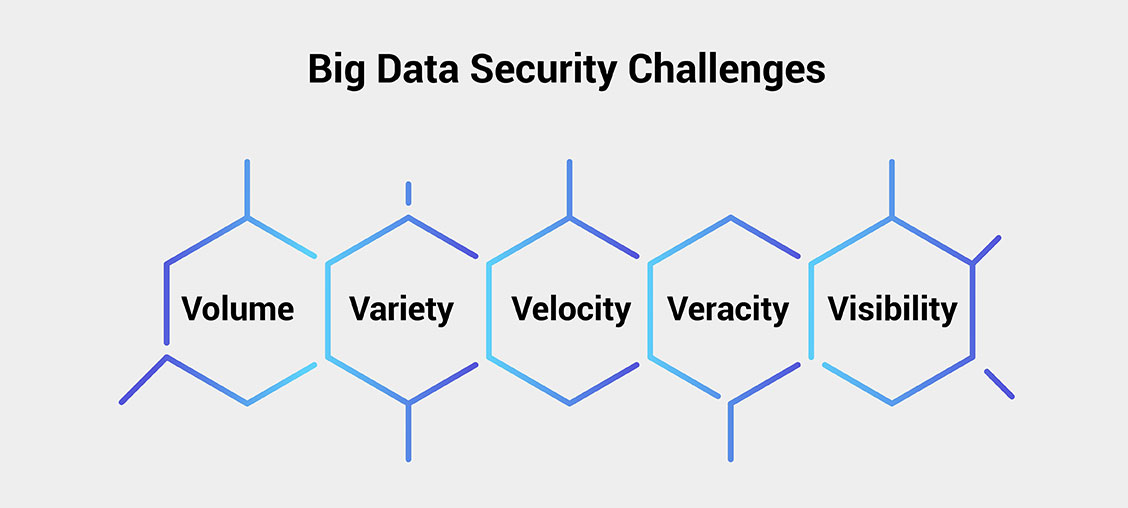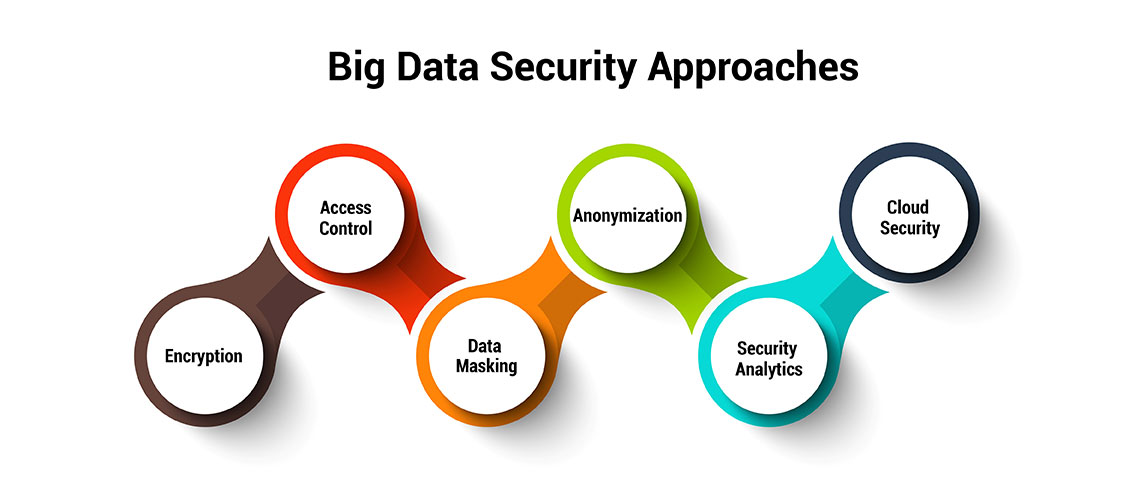Big Data Security: Challenges and Solutions for Digital Age
May 02, 2024

Big Data analytics has experienced a quick rise and is becoming useful for extracting relevant information from a huge amount of data. Nevertheless, as Big Data is integrated into the cybersecurity policy, security experts are faced with various security challenges. Protecting Big Data is a vital step to ensure the confidentiality of content from people with malicious intent or those who may be after the data. This article focuses on the Big Data security challenges and proposes methods and solutions for a manageable risk scale.
Big Data Security Overview
Data analytics has become one of the effective measures to obtain precious information amid the huge sum of it. But as the volume and complexity in Big Data's increases, it also intensifies the challenges with keeping that data secure. A wide range of data formats exist, including texts, images, videos, and sensor data; hence, the task of protecting security measures is getting complex. The amount of information is produced a lot faster than it can be processed and so real-time security measures need to be implemented. It is very significant for Big Data to ensure the authenticity and dependability of the data to accomplish security goals. An issue with the monitoring and controlling of Big Data environments will persist and escalate especially when your data is not stored in the centralized systems, but rather resident in distributed and cloud computing environments.
Challenges in Big Data Security
The challenges in securing Big Data are multifaceted, stemming from its unique characteristics of volume, variety, velocity, veracity, and visibility.

-
Volume: The fact that Big Data entails vast amounts of data renders it difficult to store and process securely. Conventional security measures may fail to provide enough safety for the information as large occupations of data need to be protected. Effective and scalable storage solutions combined with data processing technology for capability handling of big data volume will enable Big Data to be managed correctly.
-
Variety: Data acquired by researchers comes in different formats such as text, photos, videos, and sensory information. Ensuring that this varied data category is secured with the right set of security solutions which have in-built adaptability to different data formats, becomes a critical step in an evolved privacy framework. Through using data classification techniques and data governance provisions, the variety of Big Data can be controlled.
-
Velocity: Big Data is produced and analyzed tremendously, necessitating immediate security measures to timely discover and address threats. The use of real-time monitoring and automated response mechanisms is effective in safeguarding perceived perils that could arise from such immense data speed.
-
Veracity: Enabling appropriate and reliable Big Data cannot be possible without having good security measures. Improper or untrustworthy information may influence protective decisions incorrectly, thus underrating the level of security and its effectiveness.
-
Visibility: Effective management of visibility and control over the Big Data environment may be difficult in distributed and cloud-based systems. Organizations have to develop wholesome surveillance mechanisms that gauge data accessibility, usage, and modifications to guarantee that policies and regulations are observed.
Big Data Security Approaches
To address the challenges of Big Data security, organizations can adopt a variety of approaches tailored to their specific needs and environments. These approaches include:

-
Encryption: Enabling a system for end-to-end stream encryption helps to defend data against malicious attacks. AES (Advanced Encryption Standard), which is an example of a distinguished encryption algorithm, encodes data security and integrity.
-
Access Control: These mechanisms are primarily meant to keep out any unauthorized person from Big Data. Role-based access control (RBAC) and multi-factor authentication (MFA) are complicated and at the same time, they are fundamental parts of the access control systems.
-
Data Masking: Data-masking methods can be applied to prevent exposing private data in big data-aggregation applications. A substitution of real values of sensitive data with masked data masking allows organizations to avoid unwarranted disclosure of sensitive information.
-
Anonymization: Anonymization techniques can help to preserve the privacy of an individual while he shares the information in the context of big data. Through masking personal identifiable information (PII) privacy regulations can be complied with, such as data privacy laws.
-
Security Analytics: By applying the security analytics tools security analysts can detect and respond to security threats in the Big Data environment. These means apply machine learning algorithmsb that scan for such data patterns and signalize incidents that are suspected to be security threats.
-
Cloud Security: Making the cloud safe is critical to secure Big Data hosted in the cloud. The cloud service providers also have security services e.g., encryption, firewalls, and activity monitoring of Big Data.
Big Data Analytics for Security
Big Data analytics plays a crucial role in enhancing security measures by leveraging advanced technologies and techniques:
-
Detecting Patterns and Anomalies: Big Data analytics may study the patterns and abnormalities in data, which might be an indicator of security threats. Real-time incisive data analysis offers the possibility of observing and handling threats on the spot so they cannot escalate.
-
Machine Learning and Artificial Intelligence: Machine learning and artificial Intelligence can be utilized to increase Big Data security analysis. These technologies, therefore, provide for automation of the process of threat detection and response. This notably enhances the security situation.
-
Real-time Monitoring: Big Data analytics is capable of monitoring all security events as they happen in real time. Organizations can quickly notice and deal with security incidents by constantly monitoring data flows, thus minimizing the damage that could occur.
Solutions for Big Data Security Challenges
Addressing the challenges of Big Data security requires a strategic approach and the implementation of effective solutions. Here are key strategies to enhance Big Data security:
-
Scalable Security Solutions: Scalable methods of security must be developed that can counteract not only the growing amount of Big Data but also its complexity as well. The solutions must be able to handle huge volumes of data and give out real-time threat detection and response functionality.
-
Comprehensive Security Policies: Conceptualizing detailed policies and procedures for the security of Big Data that encompass all the areas such as data protection, access management, and incident response. These policies should be updated from time to time to counteract ever-new security threats and challenges.
-
Collaboration and Information Sharing: Awareness raising and collaboration with other organizations over safety threats networks can help organizations handle Big Data risks. Through collaboration, different organizations can share the experience and resources to raise security to a higher level.
-
Continuous Monitoring and Auditing: Periodical monitoring, as well as auditing of Big Data environments, for timely detection and actionable response to security incidents. These entail data monitoring in services and app usage as well as performing regular security audits to know and fix the possible risks.
-
Advanced Security Technologies: Through the implementation of cutting-edge technologies including AI and machine learning aimed at improving the security of Big Data. These technologies could be useful to perform these tasks automatically for threat detection and response which in turn will help to improve the overall security posture.
Conclusion
One of the primary objectives of Big Data security is to prevent unauthorized access to sensitive information and ensure the integrity of data. With the momentous increase in Big Data analytics, the matter of security requires special attention and involvement. The best approach to tackling this is by employing strong security measures that include encryption, multi-factor authentication, and analytics. Organizations that adopt these strategies will effectively reduce the risks. Big Data analytics combined with machine learning proves to be an effective tool to pinpoint and deal with security-related threats appropriately. Also, continuous monitoring, collaboration, and fine-tuning of security policies are very vital for minimizing problems in big data facilities. Overall, making security big data’s priority will denote the trustworthiness and dependability of data-driven decision-making processes.


